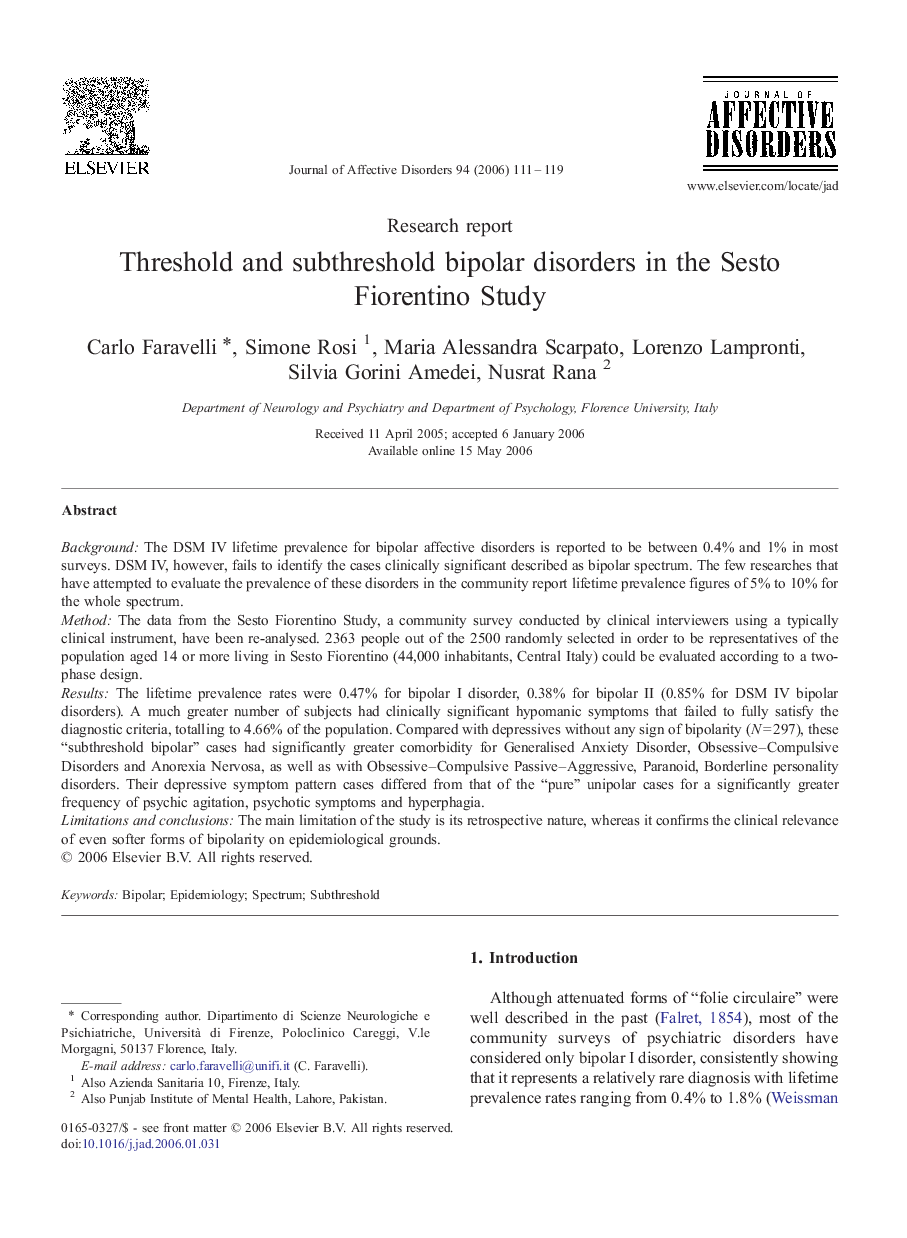| Article ID | Journal | Published Year | Pages | File Type |
|---|---|---|---|---|
| 4187917 | Journal of Affective Disorders | 2006 | 9 Pages |
BackgroundThe DSM IV lifetime prevalence for bipolar affective disorders is reported to be between 0.4% and 1% in most surveys. DSM IV, however, fails to identify the cases clinically significant described as bipolar spectrum. The few researches that have attempted to evaluate the prevalence of these disorders in the community report lifetime prevalence figures of 5% to 10% for the whole spectrum.MethodThe data from the Sesto Fiorentino Study, a community survey conducted by clinical interviewers using a typically clinical instrument, have been re-analysed. 2363 people out of the 2500 randomly selected in order to be representatives of the population aged 14 or more living in Sesto Fiorentino (44,000 inhabitants, Central Italy) could be evaluated according to a two-phase design.ResultsThe lifetime prevalence rates were 0.47% for bipolar I disorder, 0.38% for bipolar II (0.85% for DSM IV bipolar disorders). A much greater number of subjects had clinically significant hypomanic symptoms that failed to fully satisfy the diagnostic criteria, totalling to 4.66% of the population. Compared with depressives without any sign of bipolarity (N = 297), these “subthreshold bipolar” cases had significantly greater comorbidity for Generalised Anxiety Disorder, Obsessive–Compulsive Disorders and Anorexia Nervosa, as well as with Obsessive–Compulsive Passive–Aggressive, Paranoid, Borderline personality disorders. Their depressive symptom pattern cases differed from that of the “pure” unipolar cases for a significantly greater frequency of psychic agitation, psychotic symptoms and hyperphagia.Limitations and conclusionsThe main limitation of the study is its retrospective nature, whereas it confirms the clinical relevance of even softer forms of bipolarity on epidemiological grounds.
